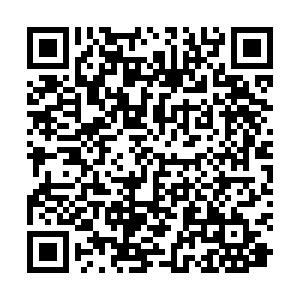Study on tourism images of karst caves based on web text analysis: An example of the Zhijin cave in Guizhou Province
-
摘要: 洞穴旅游是最具特色的旅游活动之一,游客对洞穴景区旅游形象的认知直接影响游客满意度和忠诚度,对景区的营销和发展起到重要作用。以旅游网站上的点评、游记等网络文本为基础,采用ROST CM内容挖掘软件及内容分析法,对贵州织金洞旅游形象进行了分析,主要研究结论如下:①40篇游记样本与2591条点评样本中提取出232条高频词汇,频次排在前60位的词汇表明游客的主要关注点集中于织金洞自然景观;高频词汇的语义网络矩阵以“织金洞”、“溶洞”为核心,其他特征词向周围发散状,关联词汇的关系强度表明织金洞中规模宏伟、造型奇特的岩溶景观给游客留下了深刻的印象。②旅游形象属性主类目中涉及旅游景观的高频特征词最多,其次是旅游服务与管理、旅游设施;形态各异、独具特色的岩溶景观是织金洞最大的特点,洞穴内灯光效果对游客游览有最为直接的影响。③游客积极情绪的词汇出现的频次所占比例达81.85%,消极情绪的词汇出现的频次不到10%。Abstract: Tourists’ perception of tourism images of tourist destinations directly affects the satisfaction and loyalty of tourists, and plays an important role in the marketing and development of tourist destinations. Using the ROST CM content mining software and content analysis method, this paper analyzes the tourism images of the Zhijin Cave by reviews and travel notes on travel websites. The main research conclusions are as follows, first, 232 high-frequency words are extracted from 40 travel note samples and 2,591 comment samples, and the top 60 words show that the main focus of tourists is on the natural landscape of the Zhijin cave. The semantic network matrix of high-frequency vocabulary is centered at “Zhijin cave” and “karst cave”, while other characteristic words diverge to the surrounding areas. The intensity of the relationship between the related words indicates that the magnificent and peculiar karst landscape in the Zhijin cave has left a deep impression on tourists. Second, in the main category of tourism image attributes, most of the high-frequency features are related to tourism landscape, followed by tourism services and management, and tourism facilities. The karst landscape with different forms and unique features is the biggest feature of the Zhijin cave, and the lighting effect in the cave has the most direct impact on tourist activities. Third, the proportion of positive vocabulary occurrence reaches 81.85%, and the frequency of negative emotion vocabulary appears less than 10%. Negative evaluation focuses on the service and management of tourist destinations. Tourists have a high overall recognition of the Zhijin cave and a very positive attitude towards the overall image of tourism, but the willingness to revisit is not high.
-
Key words:
- web text /
- karst cave /
- tourism image /
- high-frequency vocabulary /
- Zhijin cave
-
[1] 李燕琴,吴必虎. 旅游形象口号的作用机理与创意模式初探[J]. 旅游学刊,2004,19(1):82-86. [2] 粟路军,黄福才. 旅游者形象感知影响因素及其对忠诚影响[J]. 商业经济与管理,2010,1(6): 80-88. [3] 张珍珍,李军轶. 旅游形象研究中问卷调查和网络文本数据的对比:以西安旅游形象感知研究为例[J]. 旅游科学,2014,28(6):73-81. [4] 张高军,李君轶,张柳. 华山风景区旅游形象感知研究:基于游客网络日志的文本分析[J]. 旅游科学,2011,25(4):87-94. [5] 付业勤,王新建,郑向敏. 基于网络文本分析的旅游形象研究:以鼓浪屿为例[J]. 旅游论坛,2012,5(4):59-66. [6] 苗红,马金涛,张欢. 基于网络文本分析的嘉峪关市游客感知形象研究[J]. 西北师范大学学报(自然科学版),2014,50(2):99-104. [7] 张文亭,骆培聪. 基于网络文本的目的地旅游形象游客感知与官方传播对比研究:以福建永定土楼为例[J]. 福建师大学报(自然科学版),2017(1):90-98. [8] 皮瑞,郑鹏. “网评少林”:少林寺旅游认知、情感、整体形象研究[J]. 干旱区资源与环境, 2017,31(4):201-207. [9] 杨晓霞,向旭,袁道先,等. 喀斯特洞穴旅游研究综述[J]. 中国岩溶,2007,26(4):369-377. [10] 何小芊,张艳蓉,刘宇. 旅游洞穴网络关注度的时空特征研究:以中国最美五大旅游洞穴为例[J]. 中国岩溶,2017,36(2):275-282. [11] 孙晓蓓,杨晓霞,张枫怡. 基于百度指数的中国A级旅游洞穴景区网络关注度分布特征研究[J]. 西南师范大学学报(自然科学版),2018,43(4):81-88. [12] 韦跃龙,陈伟海,罗劬侃,等. 贵州织金洞世界地质公园喀斯特成景机制及模式研究[J]. 地质论评,2018, 64(2): 457-476. [13] 韦跃龙,陈伟海,罗劬侃,等. 贵州织金洞世界地质公园喀斯特景观特征及其形成演化分析[J]. 地球学报,2016,37(3):368-378. [14] 罗时琴,易武英,李坡. 织金洞洞穴环境监测及其影响因素分析[J]. 贵州科学,2014,32(6): 92-96. [15] Baloglu S, McCleary K W. A model of destination image formation[J]. Annals of Tourism Research,1999,26(4):868-897. [16] 纵翠丽,姚健杰. 游客重游率提升策略研究:以芜湖方特动漫主题公园为例[J]. 湖南工业大学学报(社会科学版),2014(1):49-52. [17] 肖洋,梁江川. 新媒体对旅游目的地形象构建的三种力量:OTA、UGC、DMO[J]. 旅游研究,2018,10(5):5-8. [18] 孙成国,张远海,韩道山. 梅山龙宫景观资源及其照明设计[J]. 中国岩溶,2004,23(2):121- 127. [19] 蒋辉,夏丽丽. 喀斯特洞穴旅游产品创新开发:以池州市溶洞为例[J]. 池州学院学报, 2018,32(3):83-86. -

 点击查看大图
点击查看大图
计量
- 文章访问数: 2396
- HTML浏览量: 709
- PDF下载量: 421
- 被引次数: 0



 下载:
下载:
